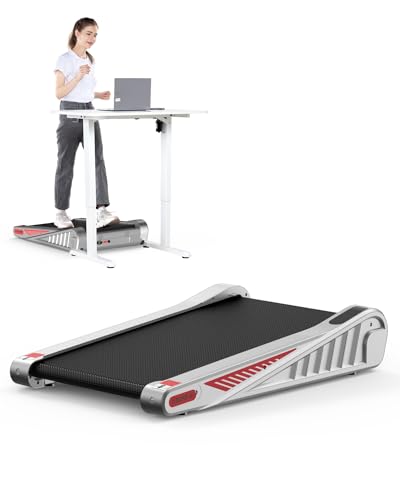Are You Responsible For The Walking Pad Non Electric Budget? 10 Terrible Ways To Spend Your Money
Exploring the Benefits of Walking Pads: The Non-Electric Choice
In the age of modern-day fitness services, where innovation rules supreme and sophistication is frequently connected with electrical devices, a brand-new pattern is emerging in practical exercise: the non-electric walking pad. These simple yet effective pieces of equipment are catching the interest of physical fitness enthusiasts and casual walkers alike.
In this detailed guide, we will explore what walking pads are, their advantages, contrasts with conventional treadmills, and supply responses to regularly asked concerns.
What is a Walking Pad?
A walking pad is a compact workout platform designed primarily for walking, running, or light running. Unlike Going Listed here which count on electrical power, non-electric walking pads run on a manual system. Users propel themselves forward by walking or running, harnessing their own body weight.
Secret Features of Non-Electric Walking Pads:
- Compact Design: Most walking pads are lightweight and foldable, making them easy to store and transport.
- User Controlled: The speed and intensity of the exercise depend upon the user's own effort.
- No Plug Required: Perfect for energy-conscious individuals, these pads need no power intake.
- Quiet Operation: A quieter option to electric treadmills, making them appropriate for homes or shared areas.
Advantages of Using Non-Electric Walking Pads
Utilizing a non-electric walking pad presents a series of benefits. Below are some of the prominent advantages:
Benefit
Description
Cost-Effective
Non-electric models are usually more affordable than their electric equivalents, making them accessible to a more comprehensive audience.
Boosted Flexibility
Users can walk or jog at their own speed, which is particularly beneficial for novices or those recuperating from injuries.
Space-Saving Design
Due to their compact size, walking pads fit comfortably in smaller areas, making them ideal for home or office use.
Low Maintenance
With no electrical components, these pads need minimal upkeep and are less likely to break down.
Ecologically Friendly
No electricity means no ecological effect from energy intake, making them an excellent choice for eco-conscious customers.
Comparing Non-Electric Walking Pads to Traditional Treadmills
Feature
Non-Electric Walking Pad
Conventional Treadmill
Source of power
Manual (user-powered)
Electric (plugged in)
Cost
Lower upfront expense
Higher initial financial investment
Size
Compact and portable
Larger, often stationary
Sound Level
Extremely quiet
Can be noisy, depending on motor and use
Customization
Minimal user settings
Extensive settings (speed, incline, programs)
Physical Engagement
Greater intensity and effort needed
Simpler to utilize but may motivate less engagement
How to Use a Non-Electric Walking Pad
Utilizing a non-electric walking pad is straightforward. Here's a simple step-by-step guide:
- Set Up: Place the walking pad on a flat, stable surface.
- Adjust the Pad: Ensure that it is at a comfortable position for use— most pads have adjustable angles to customize the walking experience.
- Warm-Up: Before making use of the pad, conduct a quick warm-up routine, which can consist of mild stretching.
- Start Walking: Step onto the pad and begin walking at a moderate speed. As your speed boosts, you will observe the pad moving.
- Display Your Intensity: Pay attention to your heart rate and how you feel. Change your speed according to your physical fitness level.
- Cool off: Gradually minimize your speed before stepping off the pad, followed by cooldown stretches.
Best Practices for Using Walking Pads
To make the most of the benefits of non-electric walking pads, think about the following suggestions:
- Incorporate Variety: Alternate in between walking and jogging for a full-body exercise.
- Engage Your Core: Maintain excellent posture by keeping your core engaged while using the pad.
- Hydration: Remember to hydrate before and after your exercise.
- Consistency: Aim to use the walking pad routinely. Start with 15-20 minutes and slowly increase the period.
Often Asked Questions
1. How reliable are non-electric walking pads for weight loss?
Non-electric walking pads can be reliable for weight loss when used regularly in combination with a healthy diet plan. Considering that they require more effort, they can make it possible for greater calorie expenditure throughout workouts.
2. What is the weight capability of the majority of walking pads?
The majority of non-electric walking pads can support individuals approximately 250-300 pounds, depending upon the model. Always inspect the maker's specifications for precise details.
3. Are there any advised brands for walking pads?
Some popular brands consist of InMovement, ProForm (manual designs), and ECHANFIT, each offering a range of functions customized to diverse user choices.
4. Can non-electric walking pads be utilized outdoors?
These walking pads are normally created for indoor use. Utilizing them outdoors might expose them to weather that could impact their sturdiness.
5. How do I store a walking pad?
Many non-electric walking pads are foldable. Simply fold them up and store them in a closet, under a bed, or any practical space.
Non-electric walking pads offer an unique and efficient aerobic exercise alternative that emphasizes simplicity and ease of access. By allowing users to create their physical fitness program without the constraints of power cables and complicated user interfaces, these pads empower people throughout various fitness levels.
For anyone looking for an affordable, space-saving, and effective option to conventional exercise devices, exploring the world of non-electric walking pads might be the ideal next step in their physical fitness journey. By choosing to purchase one of these versatile tools, people can foster healthier habits while delighting in the empowering experience of motion on their own terms.
